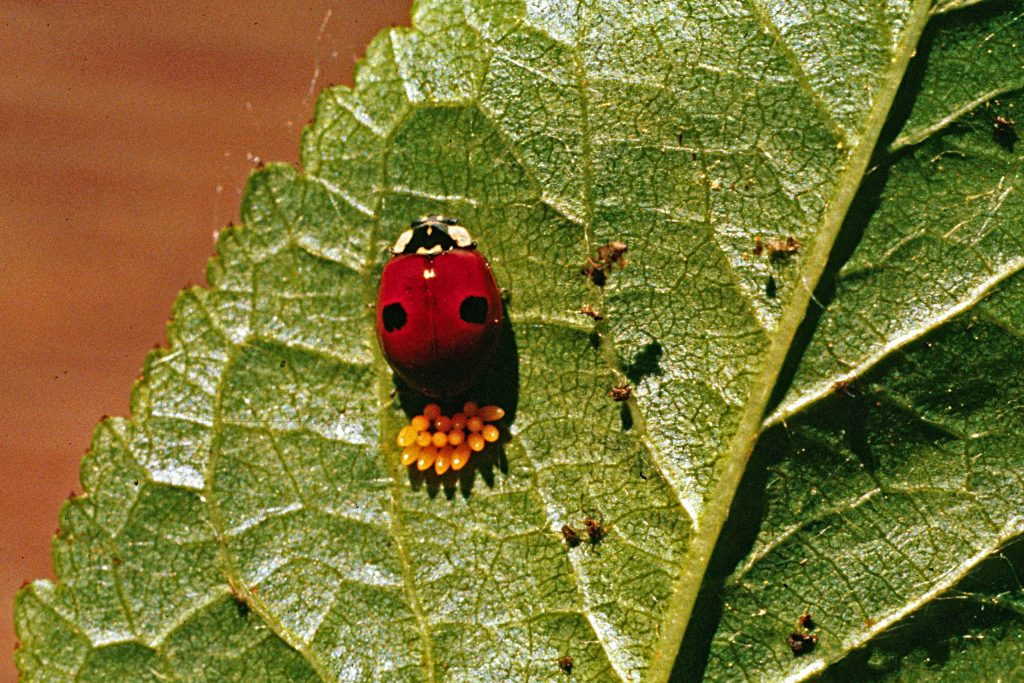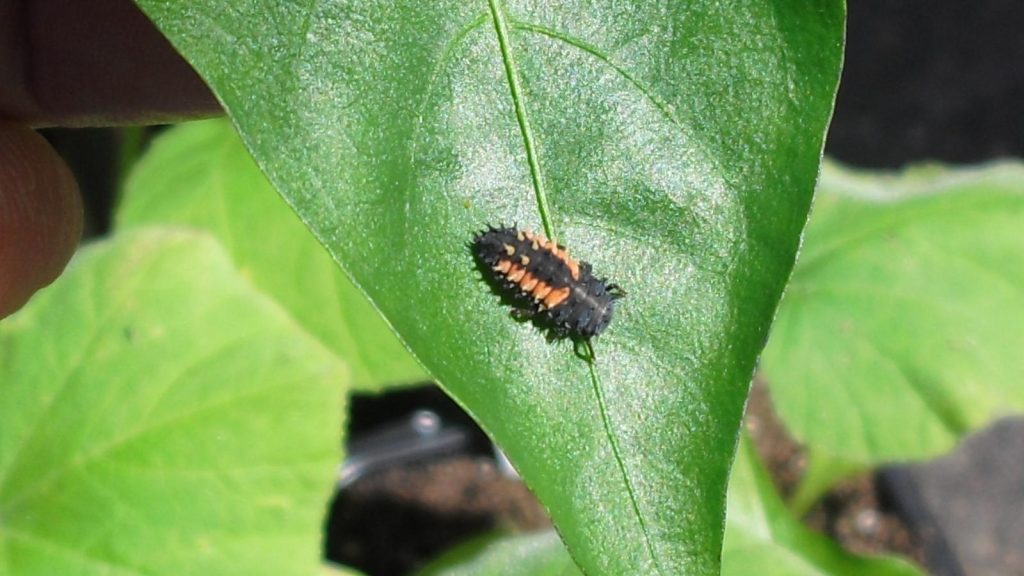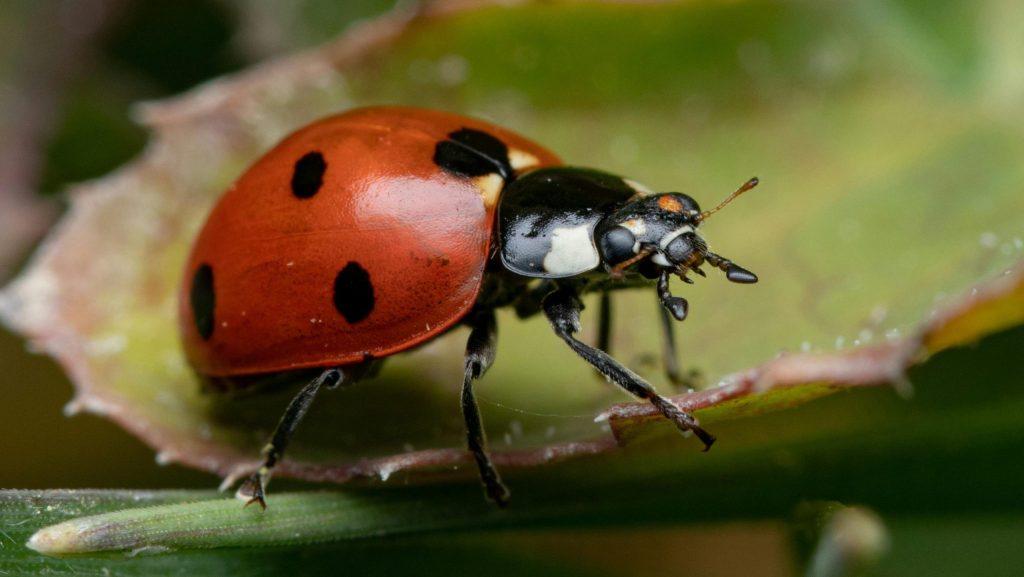Key Takeaways
- Ladybug eggs are tiny, yellow to orange, oval-shaped, and laid in clusters on the underside of leaves near aphid colonies.
- Their lifecycle includes four stages: egg, larva, pupa, and adult—each essential for growth and pest control.
- Ladybug larvae look like tiny black alligators with orange spots and are voracious aphid predators.
- Adult ladybugs live up to a year, feeding on harmful insects but may cause indoor infestations during colder months.
- Prevent infestations by using screens, reducing indoor lighting, removing attractive plants, and seeking pest control if needed.
This guide explores the stages of the ladybug lifecycle, including detailed insights into ladybug eggs, larvae, pupae, and adults, with practical advice for gardeners.
Contact professional pest control for expert assistance if you encounter a ladybug infestation in your home.

What Do Ladybug Eggs Look Like?
Ladybug eggs are a crucial first step in the life cycle of a ladybug, marking the beginning of their journey from predators to beneficial garden allies. Ladybug eggs are tiny, oval-shaped, and elongated, measuring about 1mm in length.They are typically pale yellow to bright orange in color, depending on the species and stage of development. These eggs are often laid in clusters of 10–50 on the underside of leaves, appearing like small rows of elongated grains of rice.
Their vibrant color helps distinguish them from other insect eggs, making them easier to identify in the garden. Now that we know what ladybug eggs look like, let’s learn more about the full lifecycle of lay bugs and find out how to get rid of an infestation.
Ladybug Life Cycle
The ladybug lifecycle consists of four stages: egg, larva, pupa, and adult. Here is a table for better understanding and identification:| Stage | Appearance | Duration | Key Characteristics |
|---|---|---|---|
| Egg | Small, oval, yellow or orange; laid in clusters | 3–7 days | Found on the underside of leaves, near aphid colonies |
| Larva | Long, black, spiky; looks like a tiny alligator | 2–3 weeks | Voracious eaters of aphids and pests |
| Pupa | Small, orange, curled with black markings | 7–15 days | Immobile stage where transformation to adult occurs |
| Adult | Bright red, orange, or yellow having black spots | Up to 1 year | Feeds on pests outdoors; clusters indoors during cooler months |
Ladybug Life Cycle: Explained
Ladybugs go through four distinct stages during their lifecycle: egg, larva, pupa, and adult. Each stage has unique behaviors and characteristics that play a critical role in the development of these beneficial yet sometimes pesky insects. Let’s understand in detail.Ladybug Eggs: Stage One
Ladybugs begin their lifecycle as tiny, oval-shaped eggs. These eggs are often found in clusters on the underside of leaves, strategically placed to keep them safe from predators. Ladybug eggs are usually pale yellow to bright orange and elongated, measuring about 1mm in length.Female ladybugs lay their eggs near aphid colonies to ensure a food source for the larvae upon hatching. A single female can lay up to 1,000 eggs in her lifetime, typically in small batches of 10–50.


Not getting a solution?
Get your free pest control estimate today!Ladybug Larvae: Stage Two
The second stage of the ladybug lifecycle is the larval stage, where they are most effective at pest control. Ladybug larvae are small, elongated, and black with yellow or orange markings, resembling tiny alligators. During this stage, a single larva can consume up to 400 aphids, making them invaluable to gardeners.The larval stage lasts about 2–4 weeks, during which the larvae grow rapidly and shed their skin multiple times. To promote a healthy garden, professional pest control advice can help encourage ladybugs while minimizing harmful insects.
Ladybug Pupa: Stage Three
After their larval stage, ladybugs enter the pupa stage, where they undergo metamorphosis. The pupa is stationary, attached to leaves or stems, and is typically orange or yellow with black spots, resembling a rounded cocoon. This stage lasts around 5–7 days, during which the life cycle of a ladybug reaches its most transformative phase.Inside the pupa, the ladybug’s body structure changes dramatically as it prepares for its adult form. If pests or unusual insects in your garden concern you, consider seeking guidance from a pest control professional.

Adult Ladybug: Stage Four
The final stage of the ladybug lifecycle is the adult form, which is easily recognizable by its bright colors and rounded shape. Adult ladybugs are typically red, orange, or yellow with distinct black spots and measure about 0.3–0.4 inches long. As adults, ladybugs continue to feed on pests like aphids and lay eggs to start the life cycle again.Adult ladybugs can live for up to a year, contributing to pest control throughout their lifetime. If an overwhelming number of ladybugs invade your indoors, call a professional to safely and effectively manage the infestation.
Preventive Tips to Get Rid of Ladybugs
-
Install window screens to prevent ladybugs from getting indoors.
-
Keep indoor lights to a minimum to reduce attraction to ladybugs.
-
Remove ladybug-friendly plants that attract them, such as asters and sunflowers.
-
Clean your home regularly to remove ladybug clusters and eggs.
-
Call professional pest control if you notice large infestations inside your home.
Myths and Facts About Ladybugs
| Myth | Fact |
|---|---|
| Ladybugs are harmful to plants. | Ladybugs are beneficial insects that protect plants by consuming harmful pests like aphids. |
| All ladybugs are red with black spots. | Ladybugs come in various colors, including yellow, orange, and black, depending on the species. |
| Ladybugs don’t bite. | While rare, some species of ladybugs can bite, but their bites are harmless to humans. |
| Ladybug larvae are pests. | Ladybug larvae are critical for pest control, feeding on aphids and other harmful insects. |
| Ladybugs only thrive in the wild. | Ladybugs can adapt to gardens and urban areas, where they help control pest populations. |





